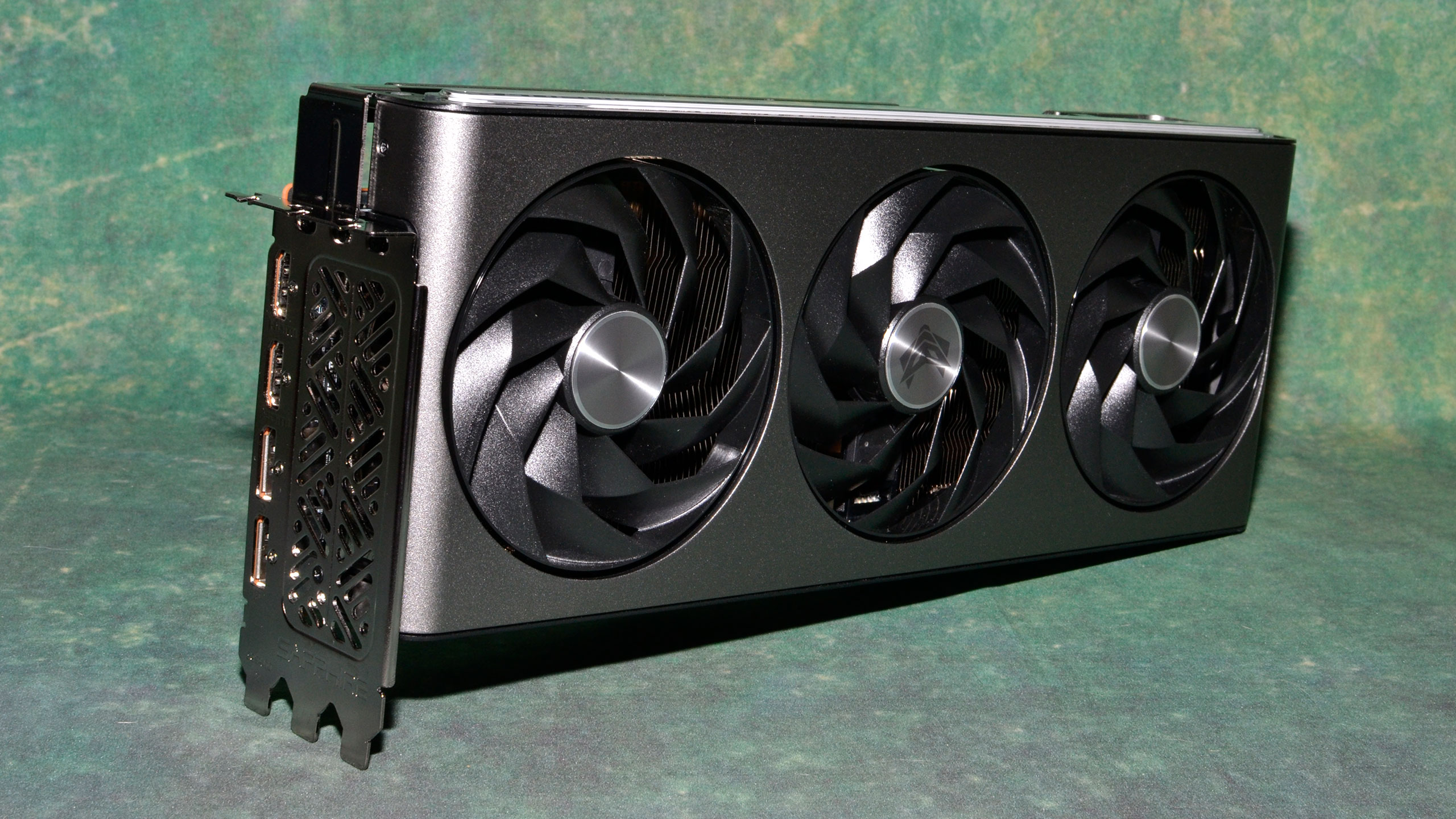Why you can trust Tom's Hardware
AMD says the RX 7800 XT primarily targets 1440p gaming, so that's where we'll begin. We expect the normal showing for an AMD GPU: relatively stronger rasterization performance and weaker ray tracing performance. And of course things still vary by game, where some may be more heavily optimized for AMD (i.e. Starfield and Borderlands 3) while others are more optimized for Nvidia (i.e. Total War: Warhammer 3).
We begin with a global view of performance using the geometric mean of all 15 games in our test suite, including both the ray tracing and rasterization test suites. Then we'll have separate charts for the rasterization and ray tracing suites, plus charts for the individual games.
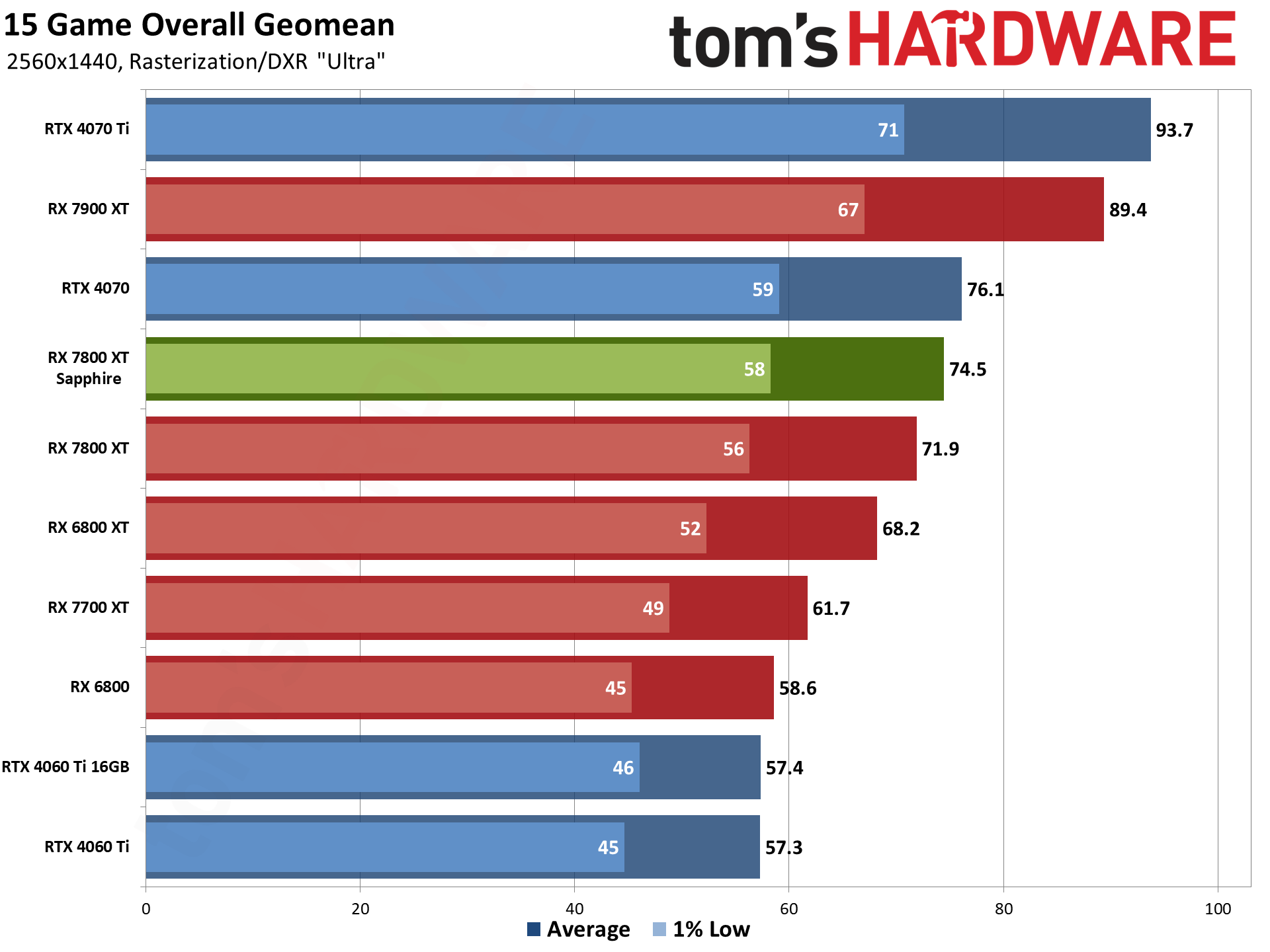
There's rarely a massive difference between varying cards using the same GPU, and that's the case here. The Sapphire RX 7800 XT Nitro+ consistently outperforms the reference model, but it's still only a few percentage point difference. Overall, Sapphire's card ends up 3.6% ahead of the Made By AMD card.
That's nearly enough to put it on the level with the RTX 4070, even when including some heavy ray tracing games. Depending on what you intend to do with your PC, you can easily be swayed to Sapphire's card or the Nvidia card. Meanwhile, the next step up from AMD represents a 20% improvement in performance for 36% more money, so the 7800 XT manages to carve out a place for itself.
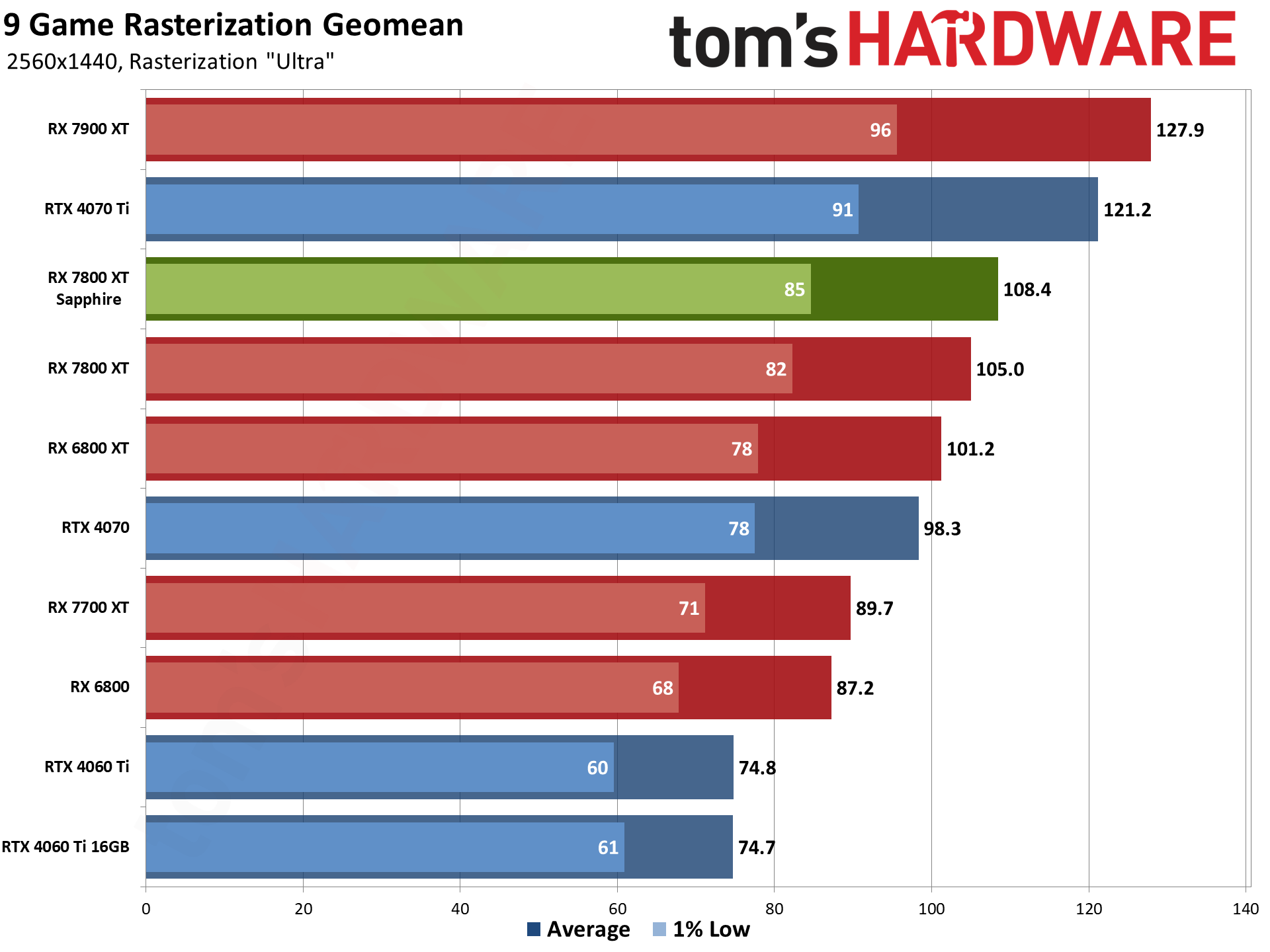
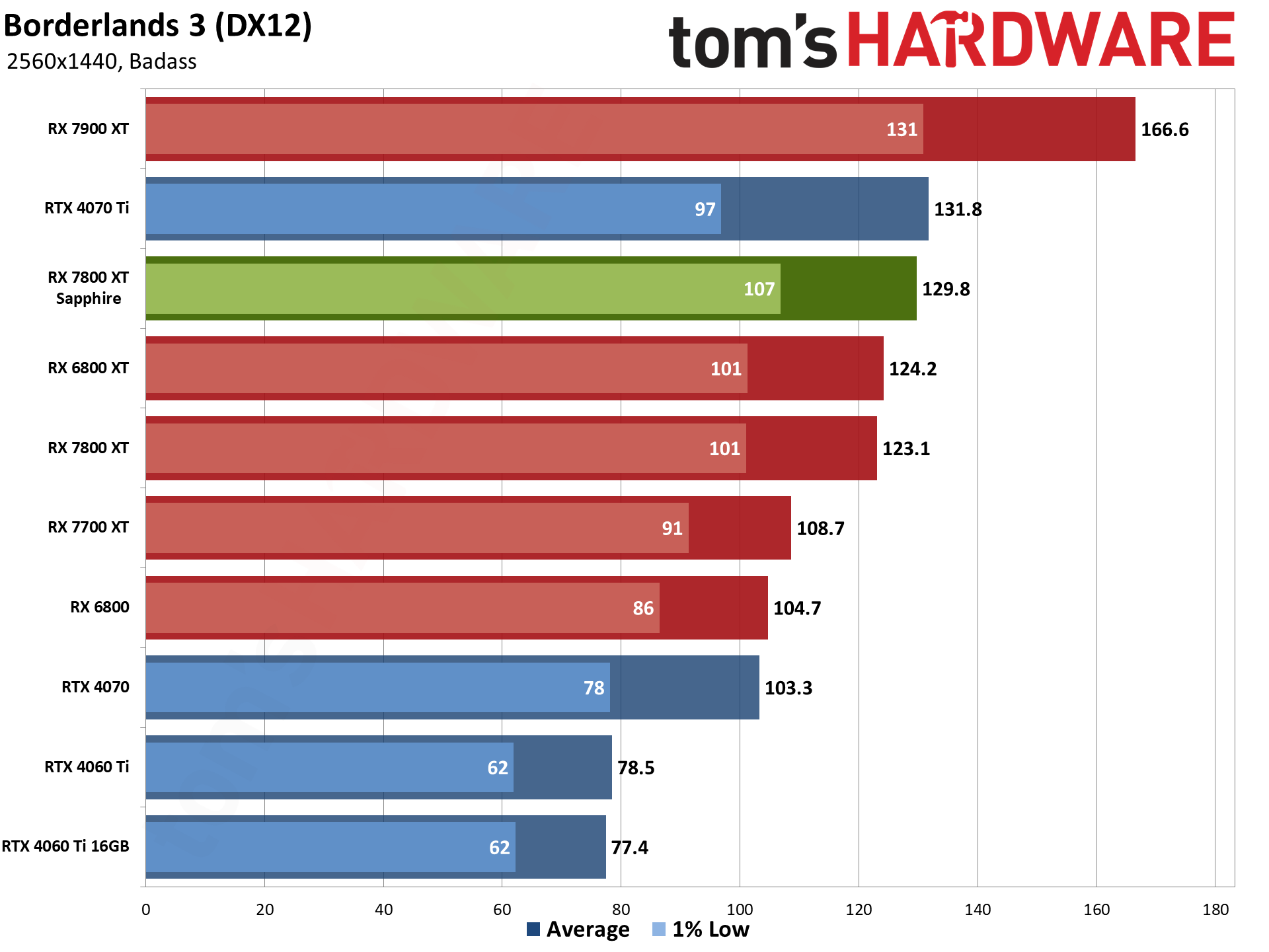
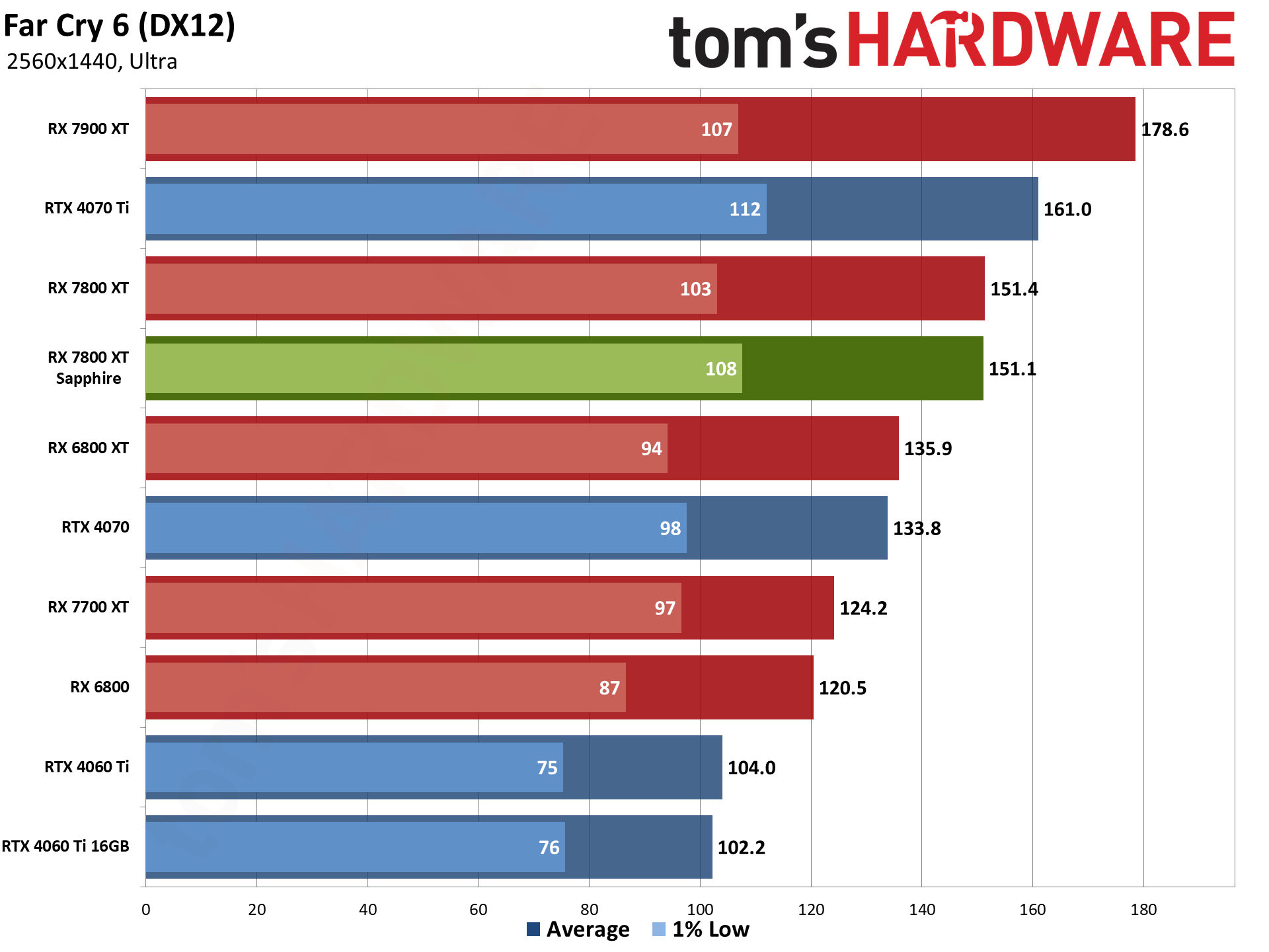
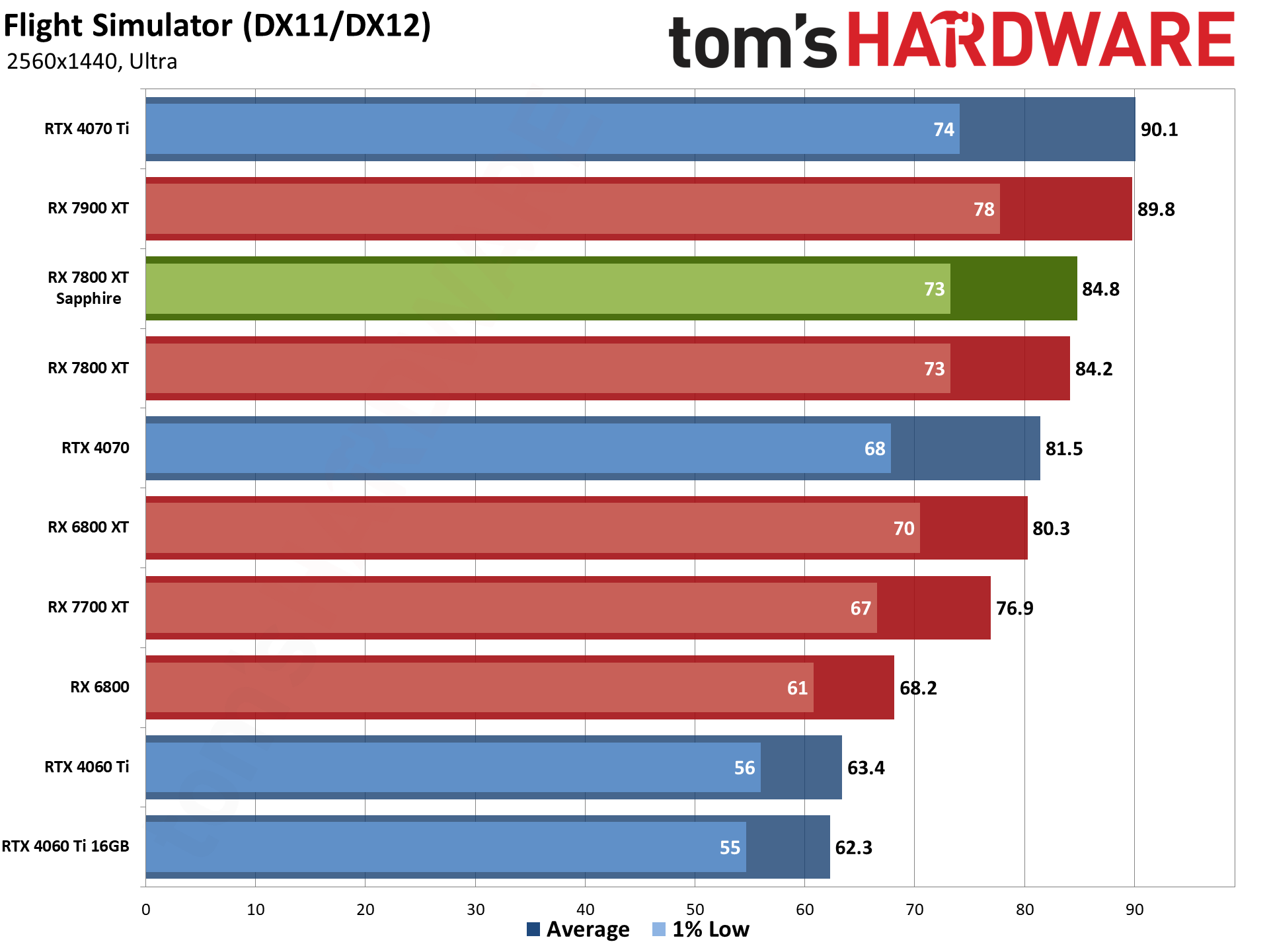
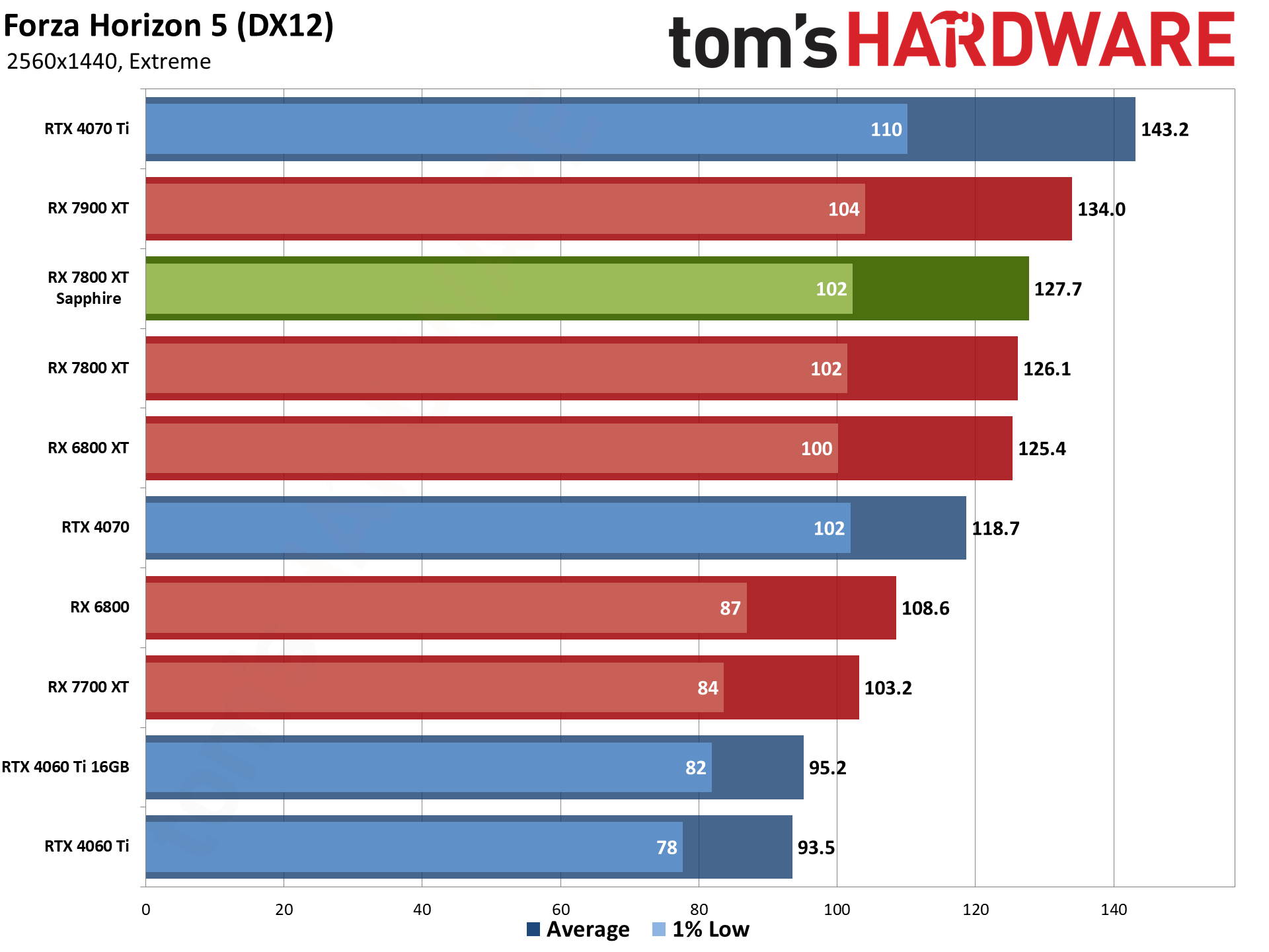
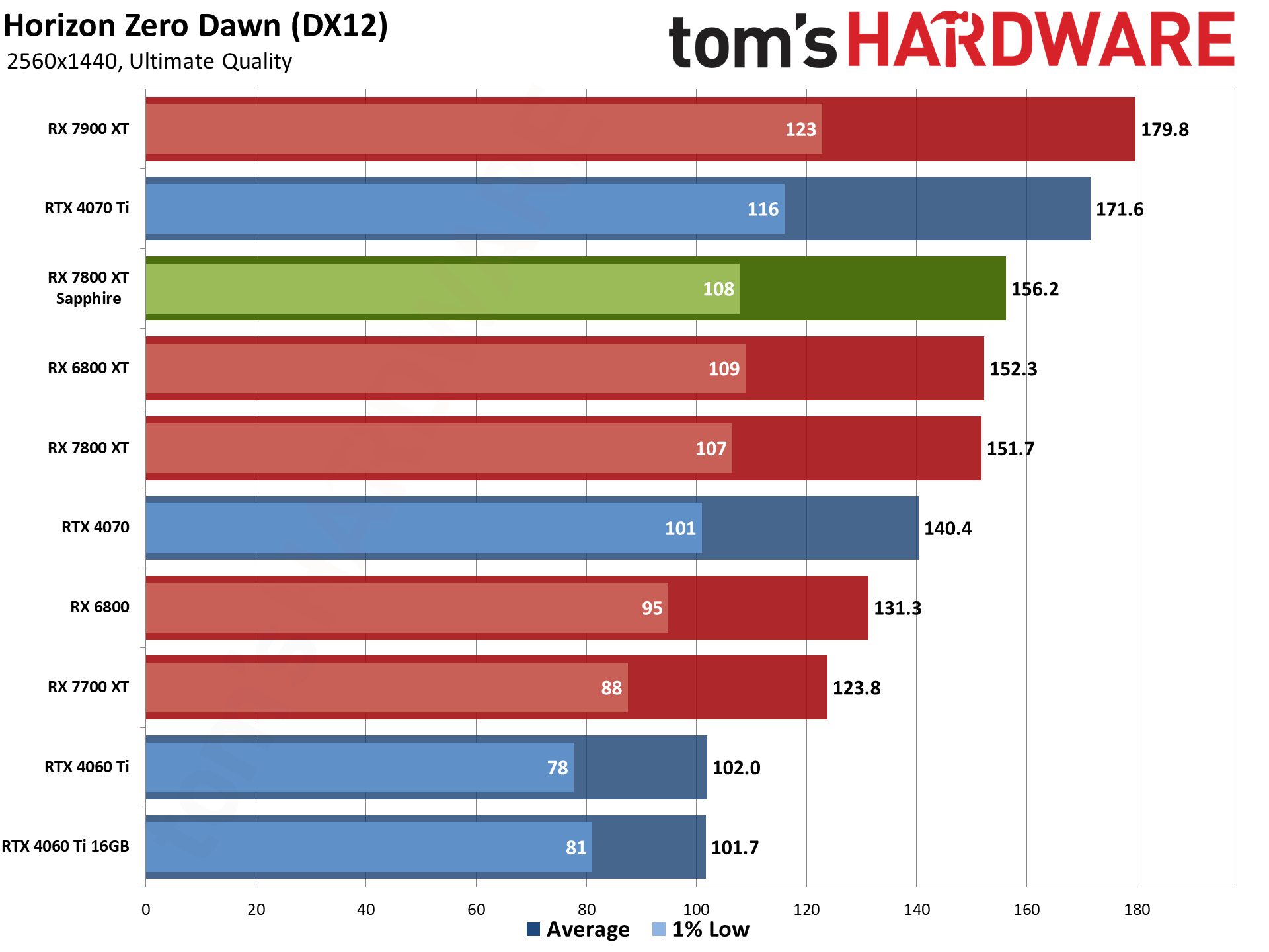
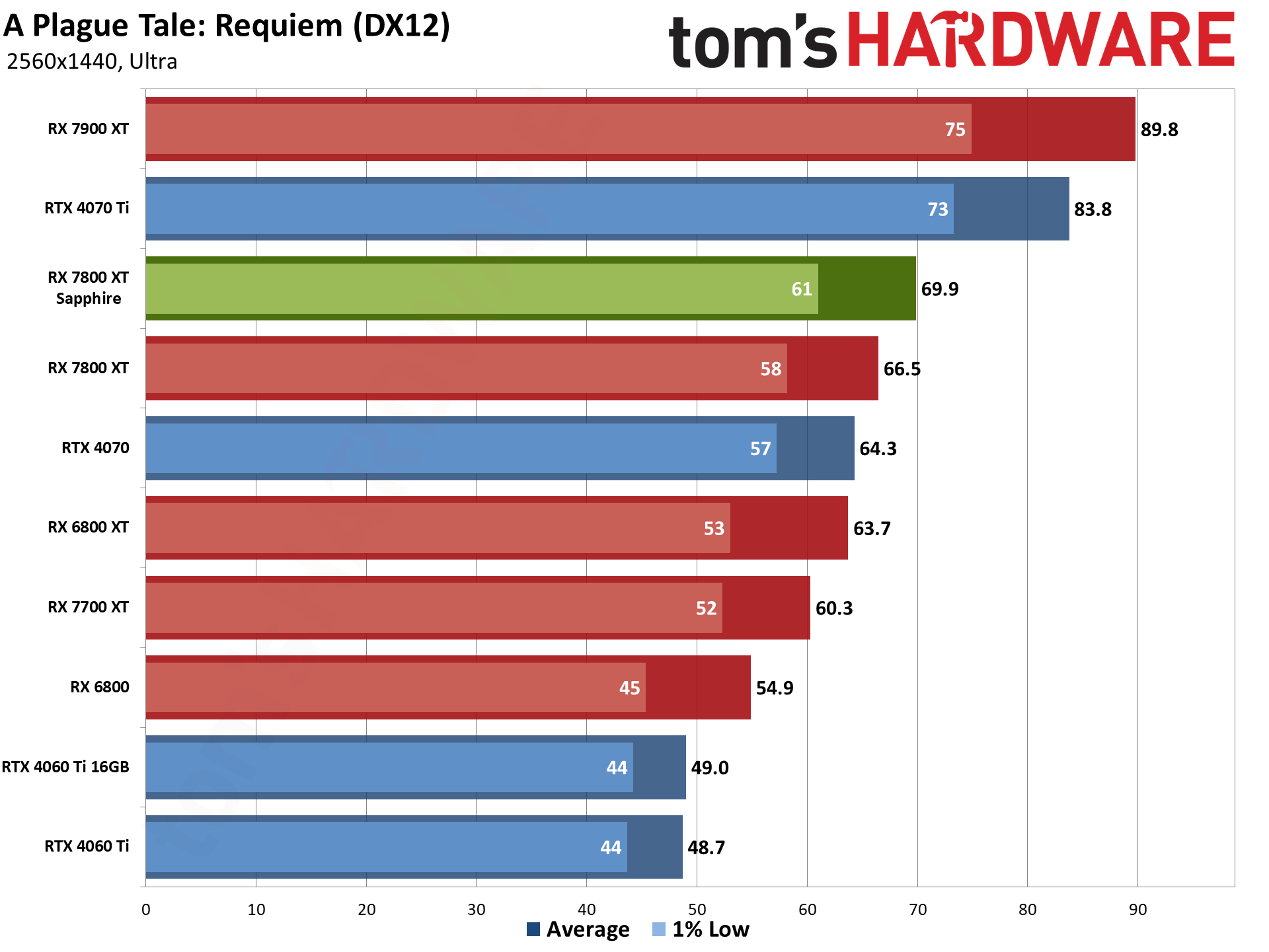
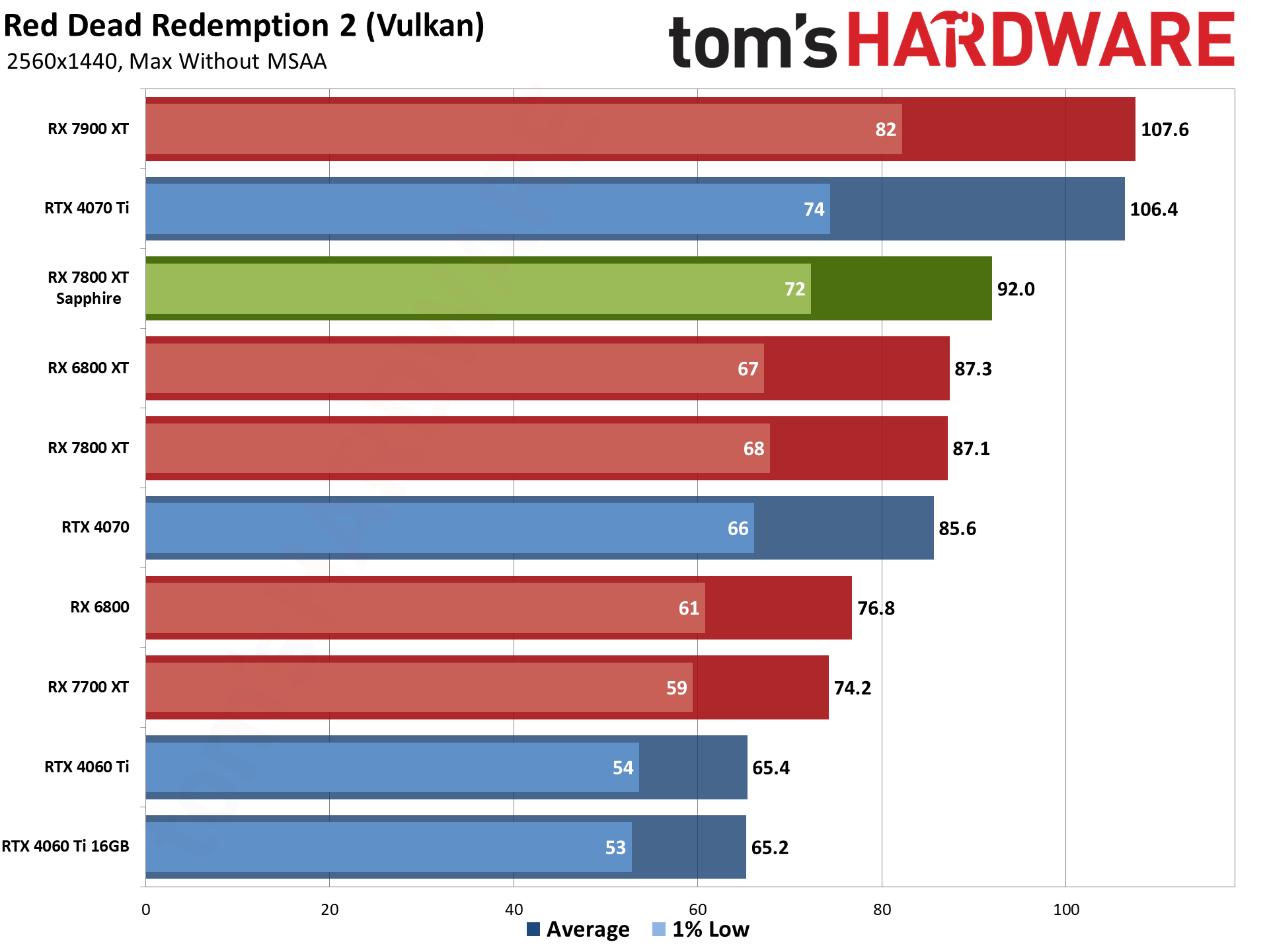
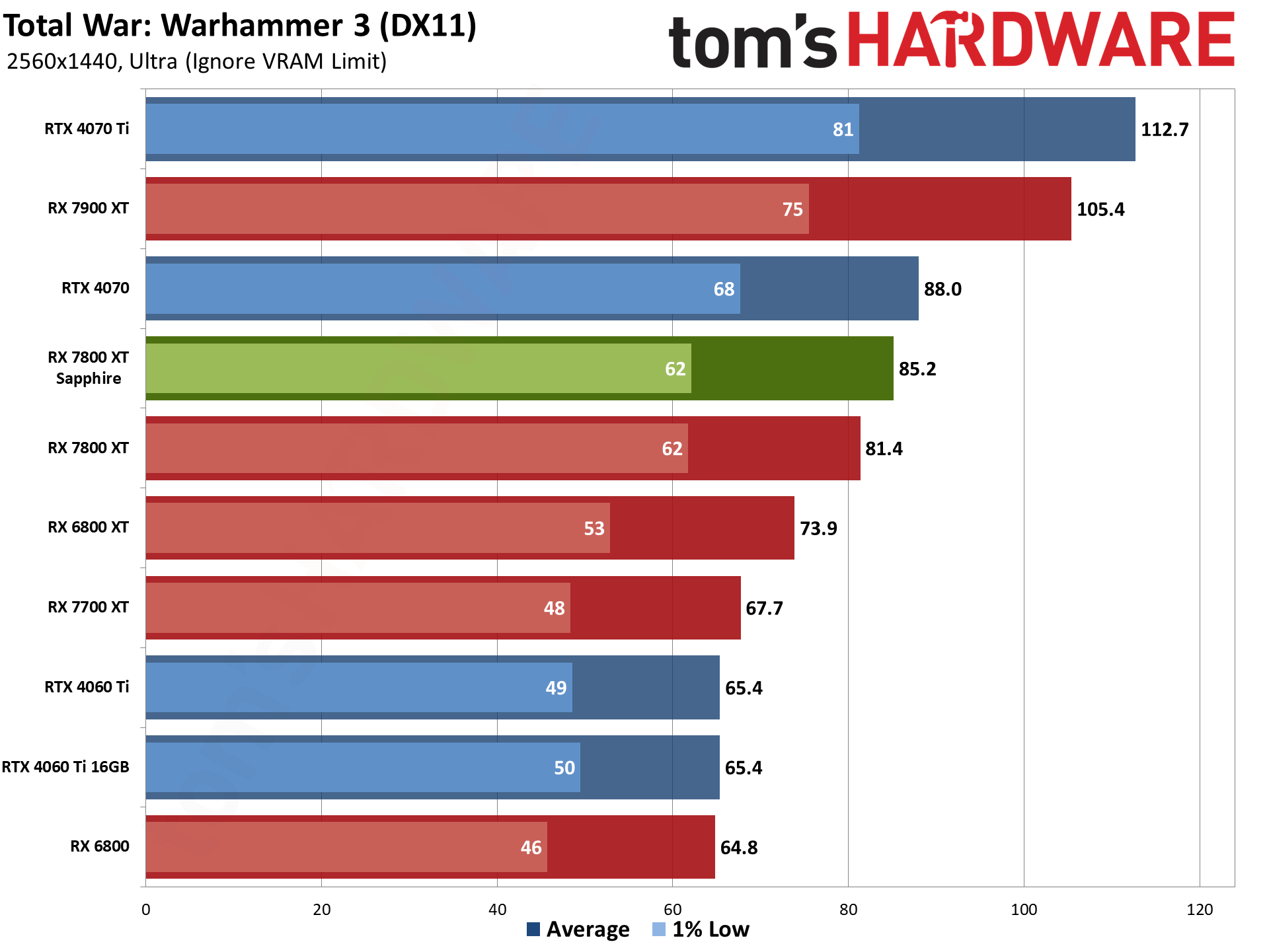
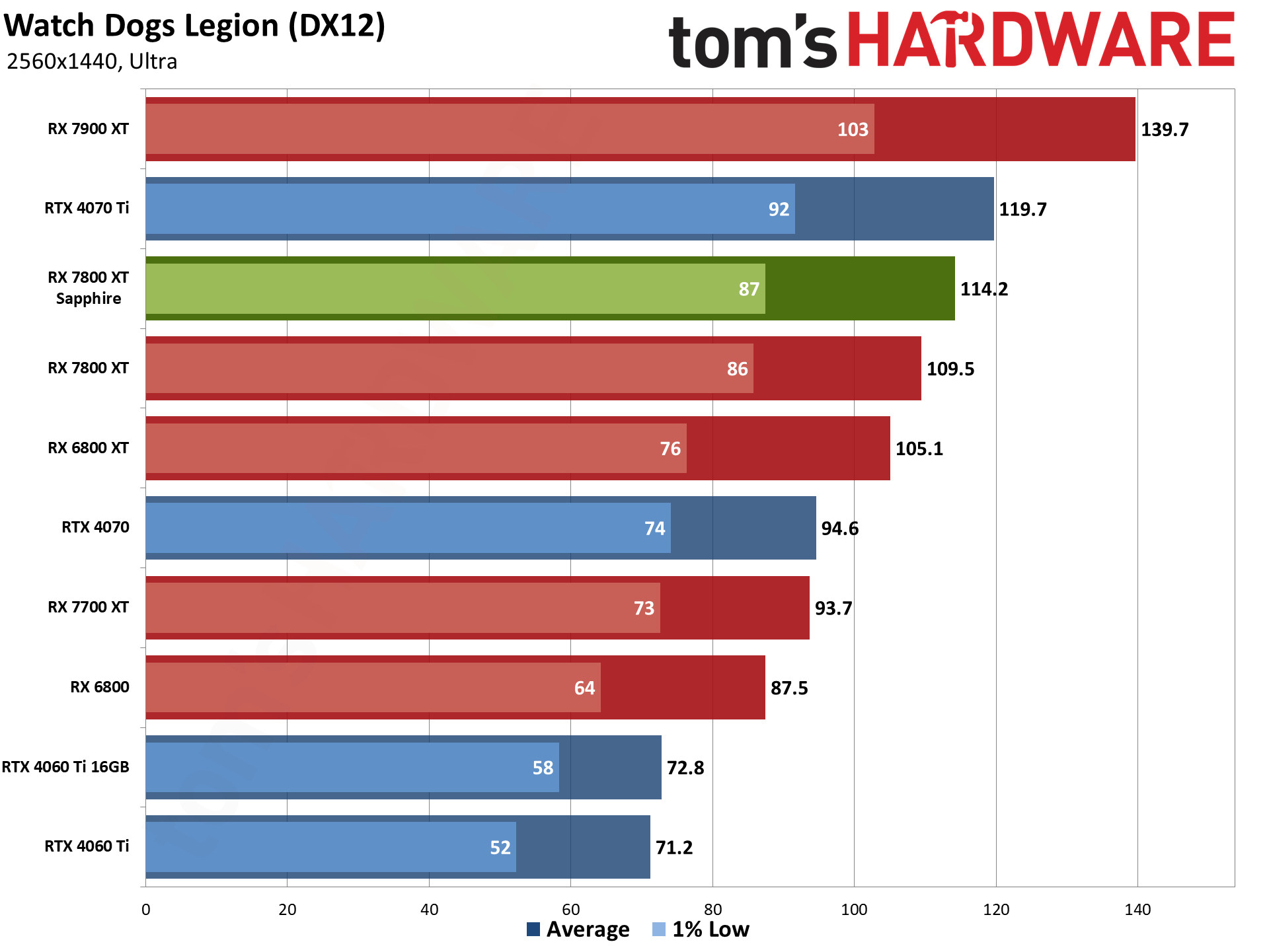
Focusing on the rasterization games doesn't really alter the story, though now the Sapphire card and the reference 7800 XT place well ahead of the RTX 4070, with Sapphire offering 10% more performance. The tables will of course turn when we get to the DXR charts below.
But does the Sapphire care offer enough of an improvement over the reference design to justify the price increase? If you're primarily concerned with raw performance, the answer is now. It's 3.3% faster overall, which is close enough that the only way you'd really spot the difference is via benchmarking. There are reasons to get the Nitro+, though, like aesthetics and cooling, and we'll get to the latter in a couple of pages.
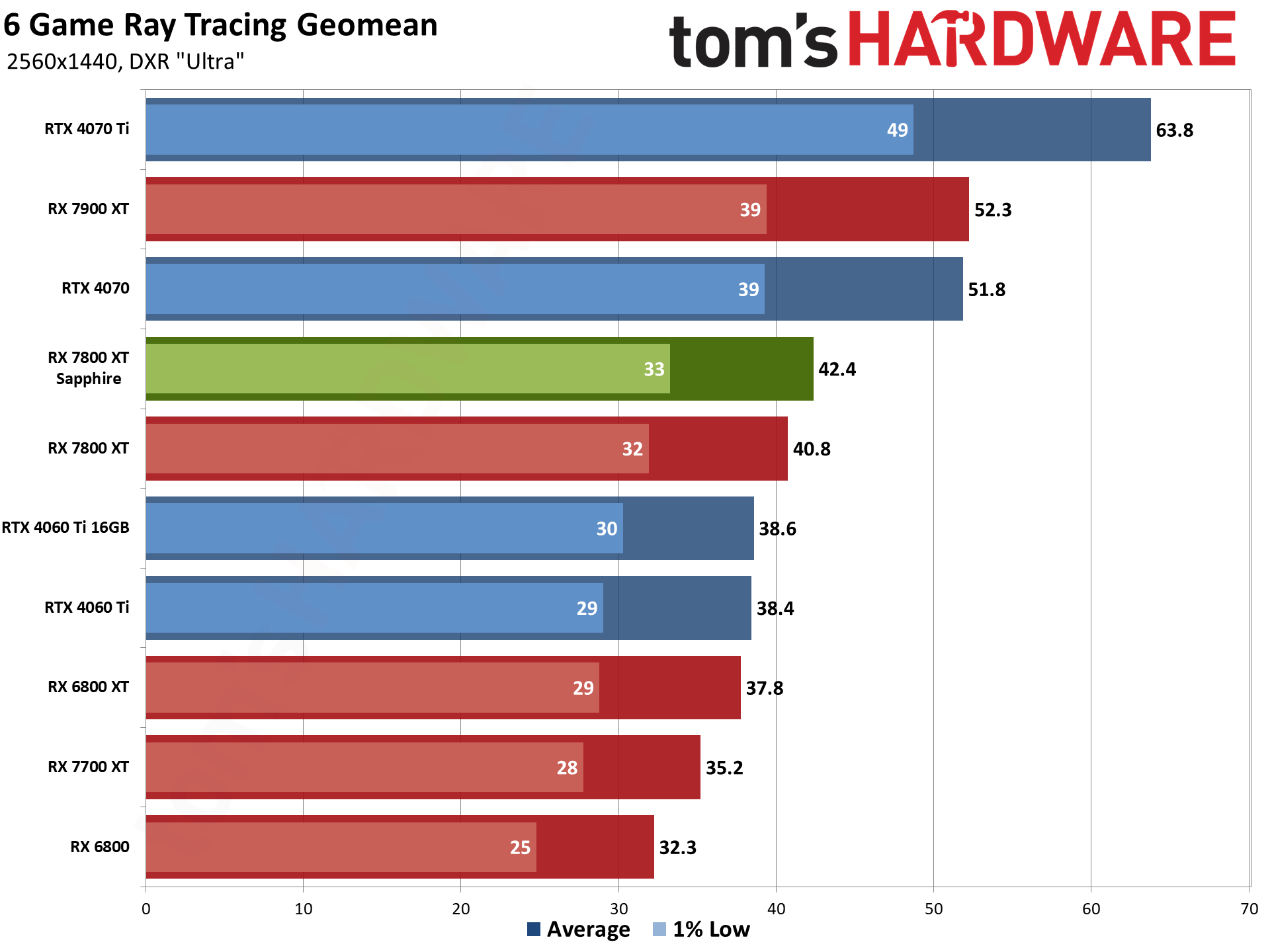
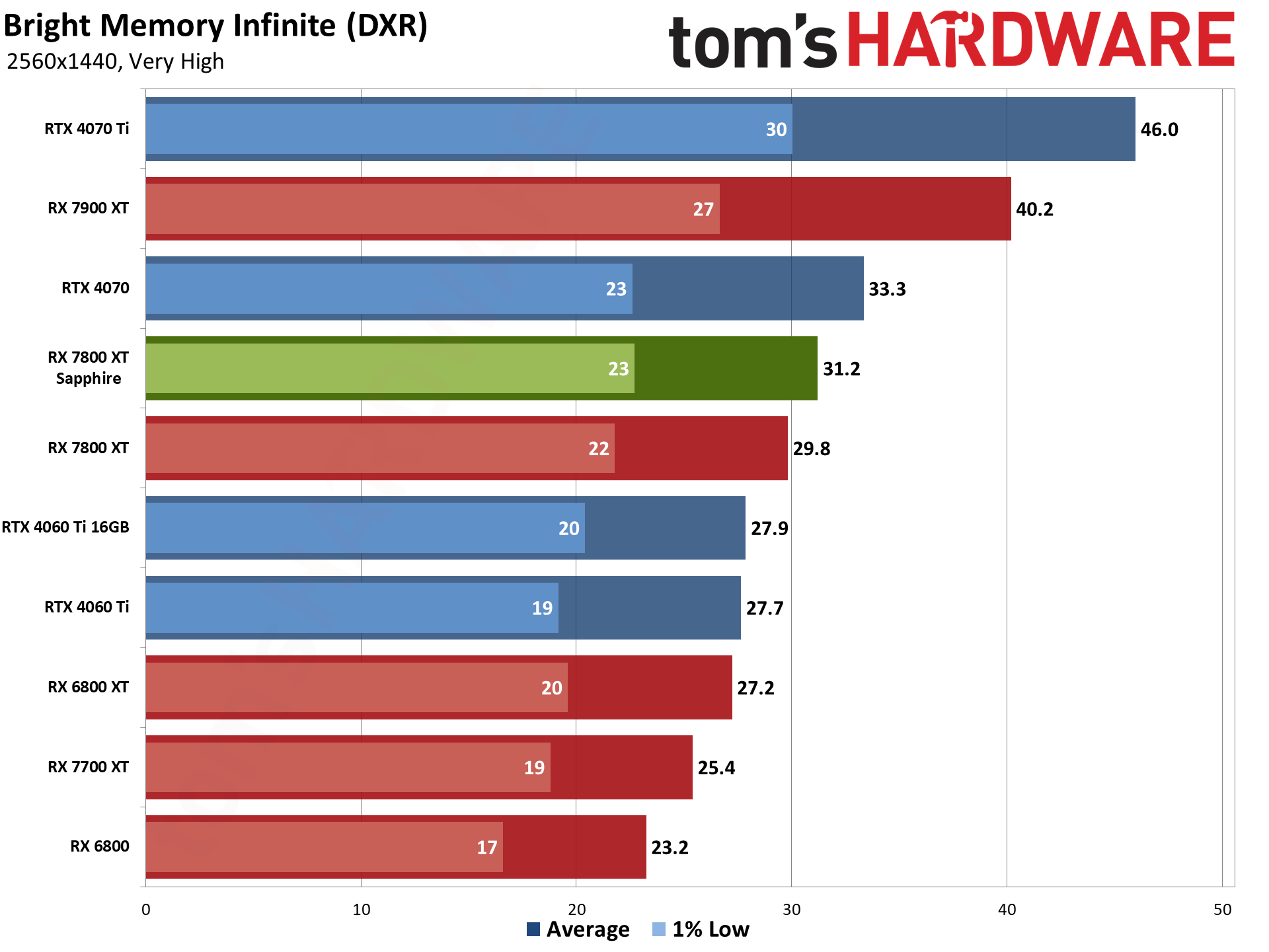
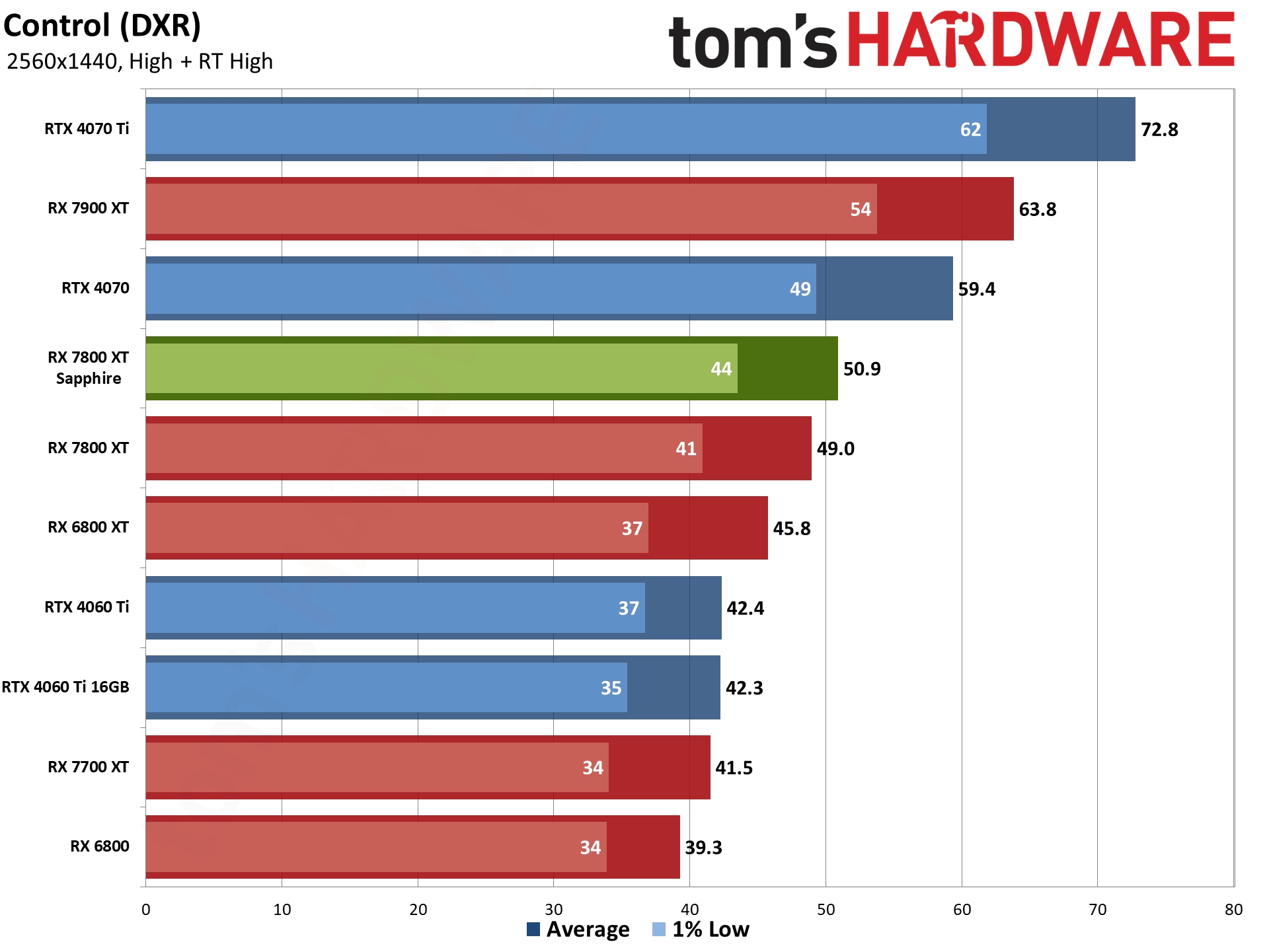
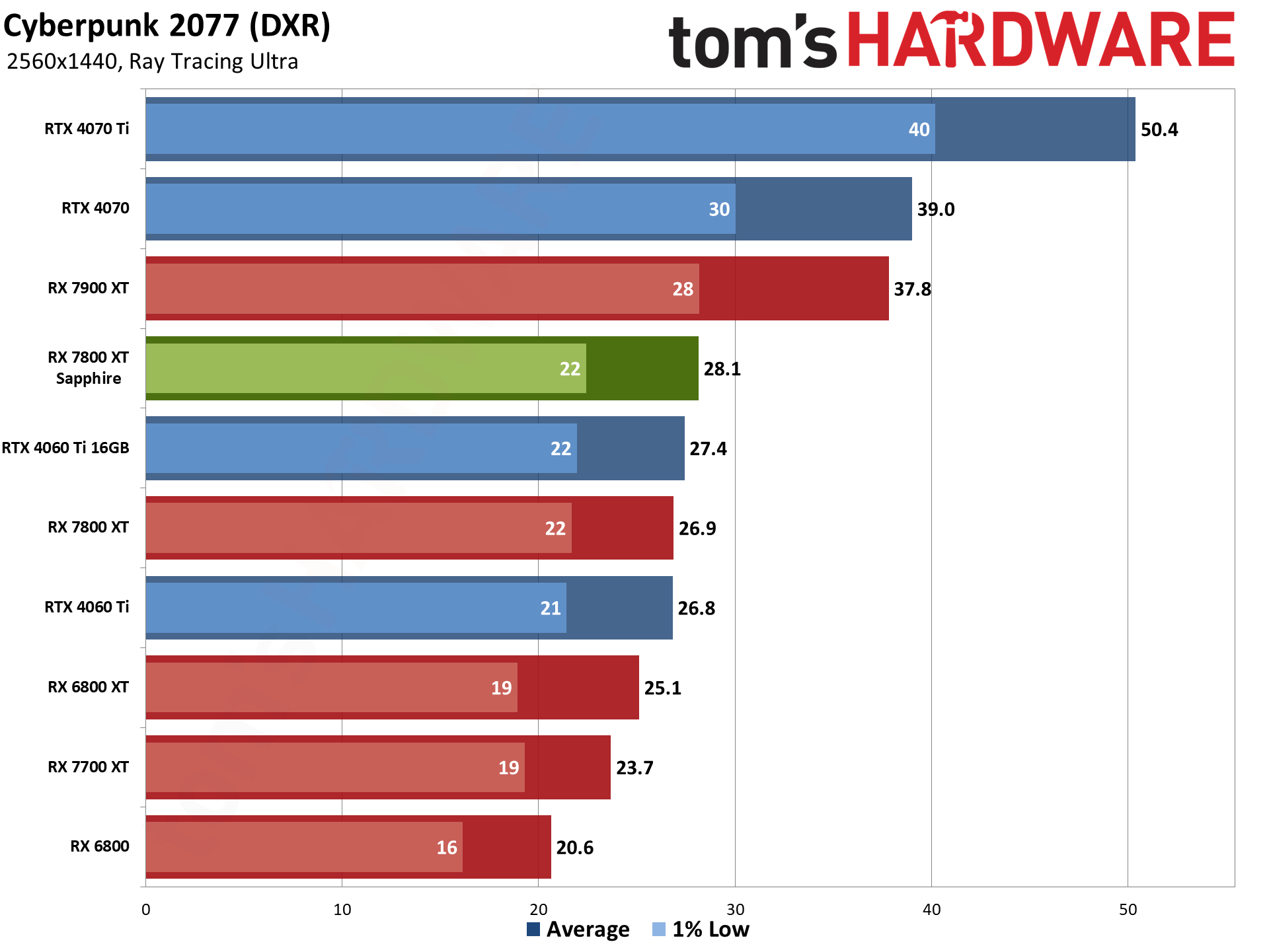
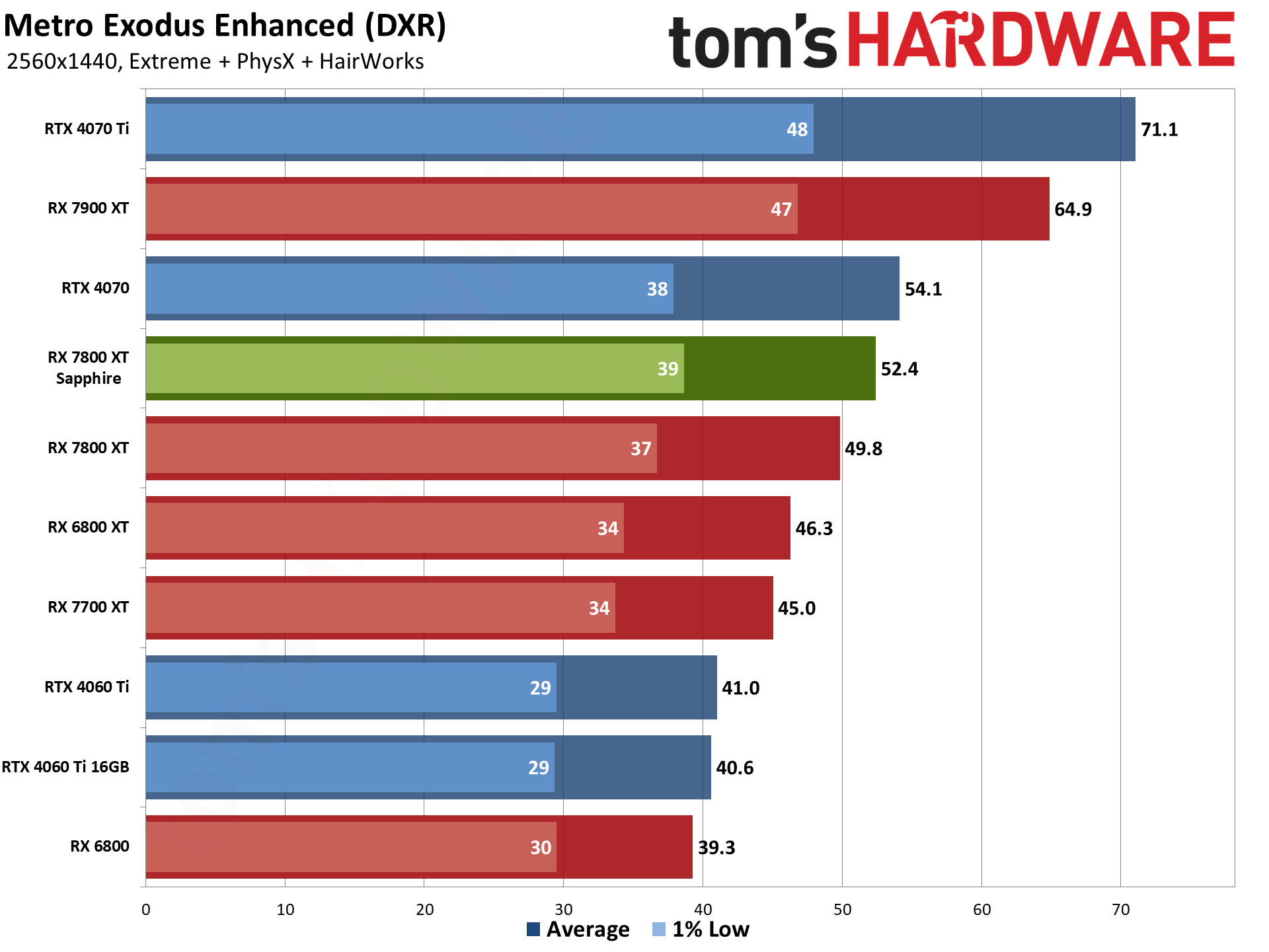
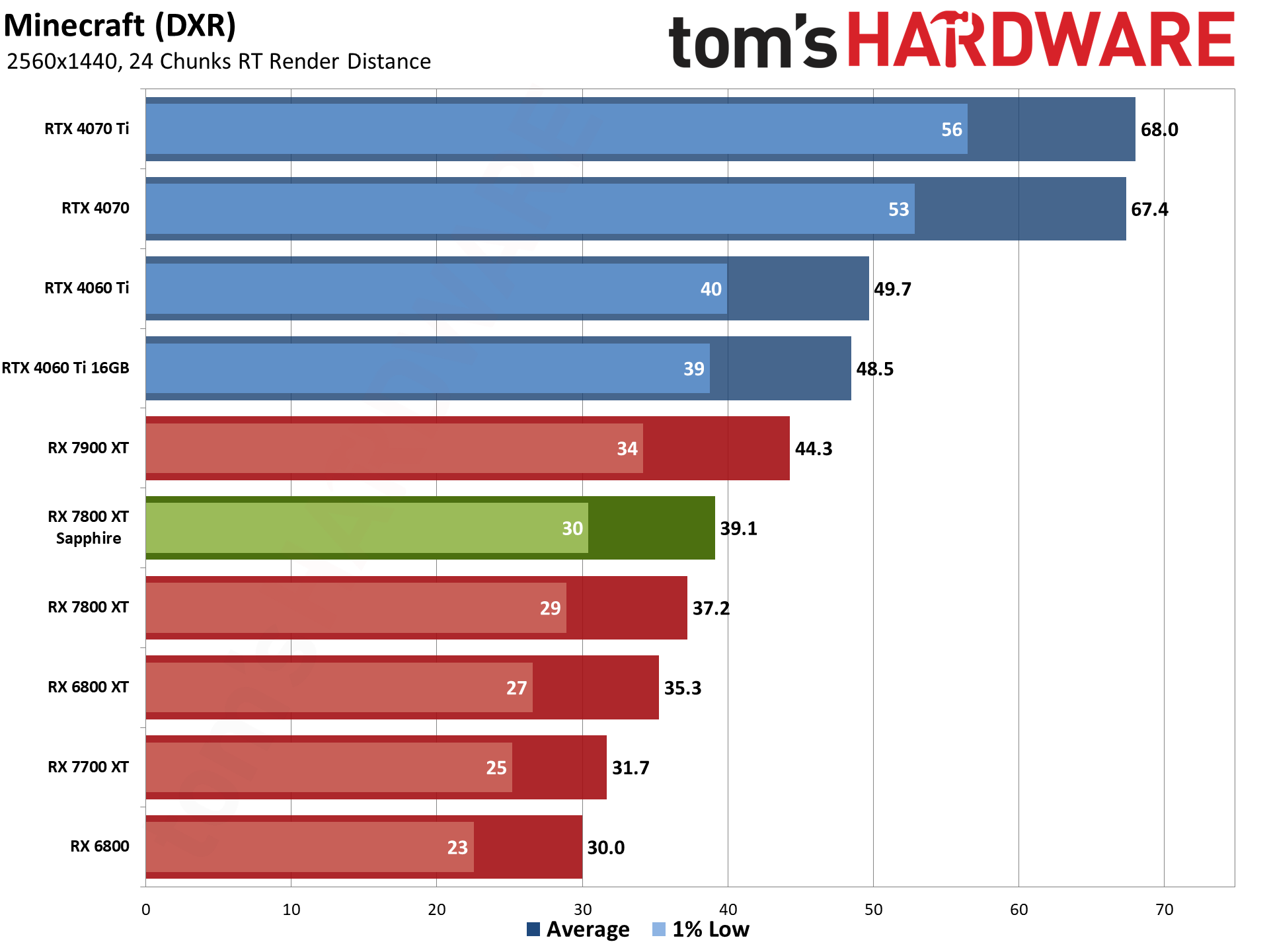
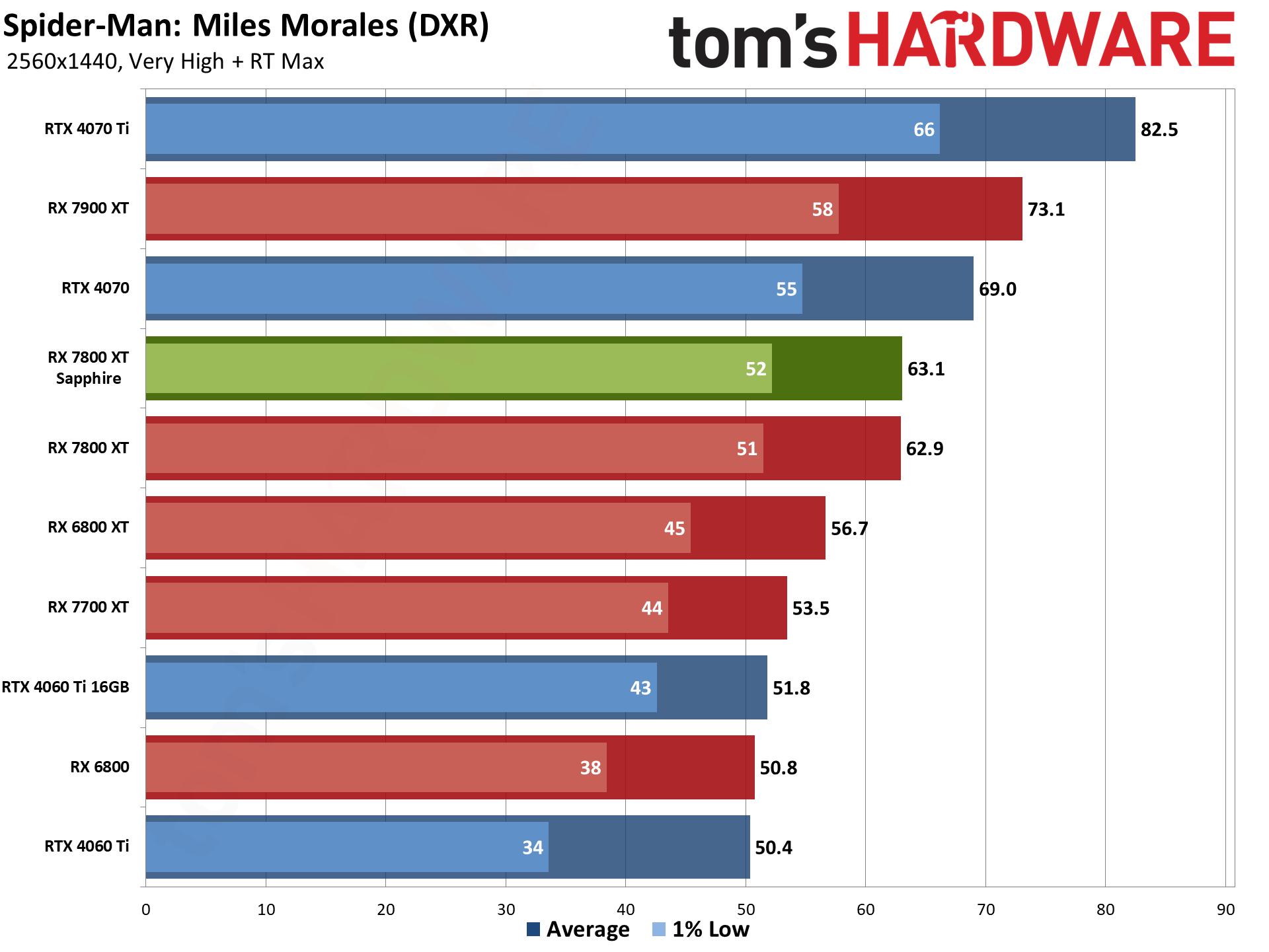
Looking just at the two RX 7800 XT cards, DXR seems to give the Sapphire card a bit more of a lead over the reference MBA design. It's not much more, at 4.0% overall, though several of the games show a 5% delta.
As noted above, DXR tips things in favor of the RTX 4070 rather than the Sapphire card. Where Sapphire was 10% faster at rasterization, it's 18% slower overall with ray tracing. That does include one of the most demanding DXR tests, however, with Minecraft running 72% faster on Nvidia's GPU. Is that due to the superior ray tracing hardware, or simply a case of the game being more optimized for Nvidia? You might think it's the latter, but Intel's Arc GPUs (not shown here) also do quite well in Minecraft with the latest drivers. Basically, the heavier the RT workload, the more AMD's inferior RT Accelerators get punished.
Many other DXR games aren't nearly as heavy, or nearly as favorable to Nvidia and Intel GPUs. Despite using multiple RT effects, Bright Memory Infinite, Control, and Spider-Man: Miles Morales all show the 4070 leading by far narrower margins of 7–17%.
- MORE: Best Graphics Cards
- MORE: GPU Benchmarks and Hierarchy
- MORE: All Graphics Content
Get Tom's Hardware's best news and in-depth reviews, straight to your inbox.
Current page: Sapphire RX 7800 XT Nitro+: 1440p Ultra Gaming Performance
Prev Page Sapphire RX 7800 XT Nitro+ Review Next Page Sapphire RX 7800 XT Nitro+: 1080p Ultra Gaming Performance
Jarred Walton is a senior editor at Tom's Hardware focusing on everything GPU. He has been working as a tech journalist since 2004, writing for AnandTech, Maximum PC, and PC Gamer. From the first S3 Virge '3D decelerators' to today's GPUs, Jarred keeps up with all the latest graphics trends and is the one to ask about game performance.
-
The 16 GBs of VRAM alone, are more than enough to instantly make this a better purchase than the pathetic 4070 Ti.Reply
-
Colif At least they didn't describe it as the Sexiest 7800xt, unlike KitguruReply
Paying extra for a quieter GPU is probably worth it. -
oofdragon So... 108fps vs 121fps against the 4070Ti, a difference no one can notice in real gameplay. That missing VRAM though? Even playing at 1440p we know it's not enough already, goes to show how overpriced Nvidias cards really are. So even if the 4070Ti costed $500 right now the 7800XT would still be the better buy. Thats the result of greed and planed obsolescence for you, a behavior I don't fund with my money. My 2 cents though, tight now the 6800XT is still the better buy at ebay around $400, it's virtually the same GPU.Reply -
Elusive Ruse The obsession with ray tracing is unhealthy, unfortunately all reviewers and influencers have drunk the kool aid. If you didn't know you would think it's some kind of ubiquitous feature across the entire gaming industry.Reply -
gg83 @JarredWaltonGPU why do you think the 6800xt is so close to the 7800xt? And do you think AMD spent a lot of money designing these new cards, or just took this generation off?Reply -
hnrich May as well just pay the little bit extra to get the cheapest 7900xt.....,. If you are paying more for a 7800xtReply -
PEnns ReplyElusive Ruse said:The obsession with ray tracing is unhealthy, unfortunately all reviewers and influencers have drunk the kool aid. If you didn't know you would think it's some kind of ubiquitous feature across the entire gaming industry.
And when Nvidia's cards are losing badly, they immediately include Ray tracing in the "reviews" where their cards have some advantage!!
Shameless shilldom. -
hnrich Reply
I think raytracing will become more and more common though, especially to highlight the advantage of pc gaming over consoles. A lot of AAA titles are featuring it now. That and lack of dlss make me reluctant to buy an AMD card. I think fsr2 has pretty poor image quality.Elusive Ruse said:The obsession with ray tracing is unhealthy, unfortunately all reviewers and influencers have drunk the kool aid. If you didn't know you would think it's some kind of ubiquitous feature across the entire gaming industry. -
NeoMorpheus Reply
But per the article….valthuer said:The 16 GBs of VRAM alone, are more than enough to instantly make this a better purchase than the pathetic 4070 Ti.
-Cons
AMD RDNA 3 isn't as efficient as Nvidia
We get it, loyalty above anything else. -
Lamarr the Strelok For at least a few years now Nvidia has been more power efficient compared to an AMD card with similar specs.I despise Nvidia right now but it's generally true.I'm on AMD right now and have had Nvidia cards before.Reply
So no. It has nothing to do with 'loyalty'.
